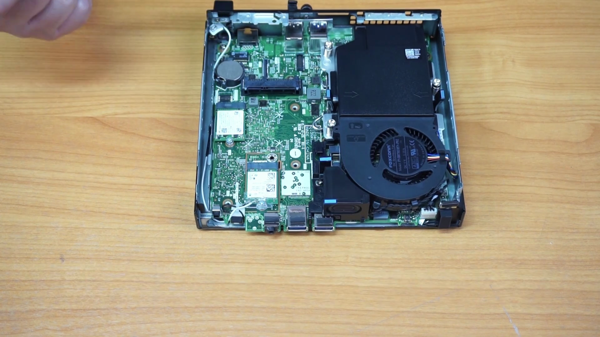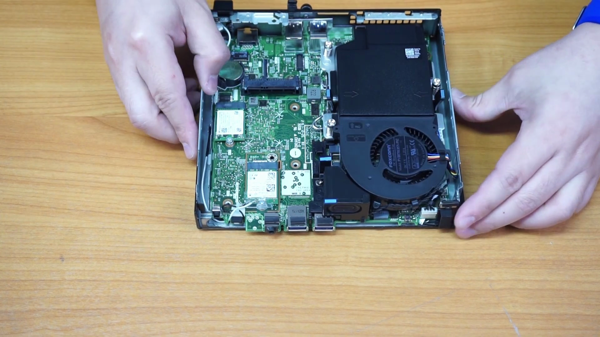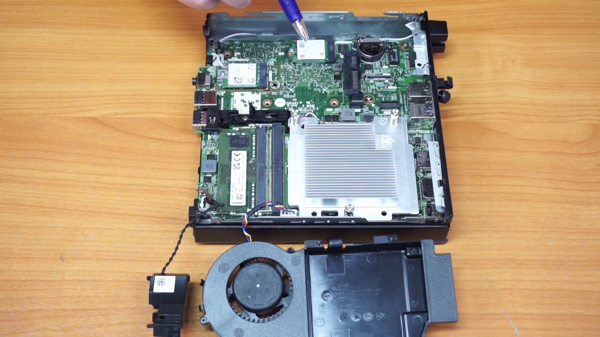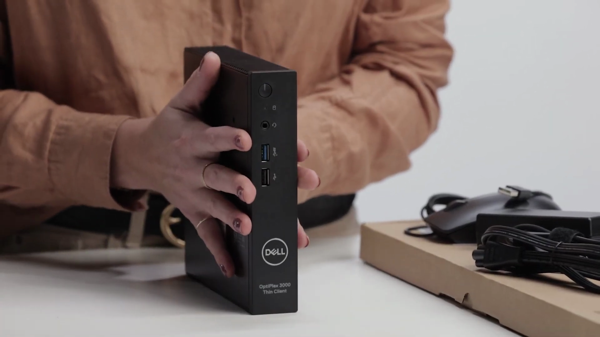Note: As an Amazon Associate I earn from qualifying purchases.
Trying out the Dell OptiPlex 3000: (data) powerhouse with an i9-12900K, 64GB RAM and 4TB SSD (2024)
Introduction
I recently go to experiment with the OptiPlex 3000 Tower at the office: a machine that packs quite high-end hardware for a business-oriented desktop. With the Intel Core i9-12900K processor and a massive 64GB of RAM, it is great for everything from basic office work to more demanding tasks (e.g. data crunching).
Specifications
| Property | Value | Property | Value |
|---|---|---|---|
| Specific Uses For Product | Business | Brand | Dell |
| Personal computer design type | Computer Tower | Operating System | Windows 11 Pro |
| Memory Storage Capacity | 4 TB | Ram Memory Installed Size | 64 GB |
| Model Name | OptiPlex 3000 Tower | Included Components | OptiPlex 3000 Business Tower Desktop |
| CPU Model | Intel Core i9 | Color | Black |
Photos
Click on photos to enlarge them:
Prices
Check prices of the Dell OptiPlex 3000 on:
Impressive Specs and Design Highlighting OptiPlex 3000s Capabilities
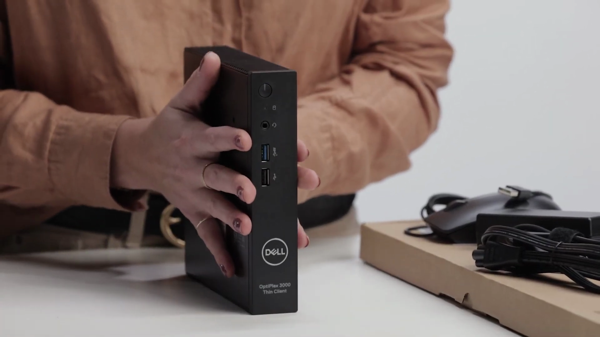
Digging into the OptiPlex 3000 Tower, the specs on paper are nothing short of impressive:
CPU: Intel Core i9-12900K with 16 cores boots performance.
Memory: A whopping 64GB RAM for multitasking.
Storage: 4TB PCIe M.2 SSD ensures quick boot times and ample space.
Graphics: Intel UHD Graphics suitable for standard office tasks.
The Intel Core i9-12900K at the heart of this machine is a powerhouse. With 16 cores and the ability to turbo boost up to 5.2 GHz, it’s clear why this is the central selling point of the OptiPlex 3000. Multitasking is a breeze, and executing demanding applications is seamless.
On the memory front, the 64GB RAM is a godsend. Be it dozens of browser tabs, bulky spreadsheets, or hefty software builds, the RAM keeps up without a hitch. Coming from previous experiences with PCs that choke on half these demands, this is a refreshing change.
The storage - a stellar 4TB PCIe M.2 SSD - speaks of speed and capacity. I’ve seen my fair share of sluggish boot-ups and transfers, but this SSD flips the script, making for an overall snappier experience. Windows 11 Pro compliments this briskness with its laid-out features tailored for productivity enhancement.
Now, the design is sleek and professional. The black tower is discreet enough to blend into any workspace, and the array of ports available is more than I could ask for. From USB 2.0 to DisplayPort 1.4, connectivity options are comprehensive, with front and back ports well-thought-out for both legacy and modern peripherals.
However, no technology is without its cons. While the Intel UHD Graphics cover basic needs, don’t expect to do any intense video editing or gaming. It’s capable but not cut out for graphic-intensive tasks. Additionally, the inclusion of a DVD-RW drive feels a bit dated; I can’t remember the last time I used one.
My biggest gripe came when the system hinted at overheating due to the original cooling system supposedly meant for an i3 processor. Performance wasn’t affected during my usage, but it’s a concern that can’t be ignored for long-term health of the system.
To cap off, the OptiPlex 3000 with the Intel i9 feels like a leap into the future of business computers while still acknowledging the past (hello, DVD-RW drive). Despite the cooling hiccup, which can be a serious issue if not addressed, and the basic integrated graphics, this machine is a powerhouse wrapped in a corporate chassis. Ready for intense workloads and equipped with Windows 11 Pro, it’s a tool poised to increase productivity significantly for any professional.
Performance Review of the Intel Core i9-12900K in a Business Context

Putting the Dell OptiPlex 3000 equipped with an Intel Core i9-12900K processor to the test in a business setting has genuinely been an eye-opener. The powerhouse CPU boasts 16 cores and 24 threads, which is more than ample for any multitasking I throw at it, and with the Intel Turbo Boost Technology bumping speeds up to 5.2 GHz, lag is basically non-existent.
Here’s a quick rundown of what I noticed:
Performance: The i9-12900K chews through heavy workloads like a hot knife through butter. Whether it’s data analysis, running complex databases, or even some light video editing, this CPU doesn’t hesitate.
Memory and Storage: With 64GB RAM and a 4TB PCIe M.2 SSD, it’s been a bliss never having to worry about running out of space or memory. The responsiveness is outstanding.
Heat Management: There’s a catch, though. The original cooling system intended for an i3 processor is a concern—it just isn’t cut out for the i9’s heat output.
I appreciate the simplistic integration with Windows 11 Pro, where features like Snap Layouts and Virtual Desktops enhance productivity for business uses. And honestly, the black tower design fits effortlessly into a professional environment without hogging desk space.
Despite its robustness, I did encounter an oddity. The system initially came with a ‘defaultuser0’ account - a puzzling hurdle. And while it’s unsettling to receive a machine geared up with an i9 on an i3’s cooling system, the solution seemed straightforward—a cooling system upgrade, which is definitely something to consider investing in.
It’s also worth noting that the unit I received had an issue with its Windows license. However, this seemed more like a one-off snag rather than a systemic problem with the Dell OptiPlex 3000 series.
In any case, the system’s potential is undeniable. The Intel Core i9-12900K makes this machine a formidable ally for high-intensity tasks in the business domain. Given the performance and capacity, it’s a workhorse that just needs a little fine-tuning (namely, an appropriate cooling solution) to excel. Whether you’re looking to upgrade your business’s workstations or need a reliable powerhouse for complex computing tasks, this setup—once optimized—will not disappoint.
Connectivity and User Experience with Windows 11 Pro on the OptiPlex 3000

Jumping into the overall user experience of Windows 11 Pro on Dell’s OptiPlex 3000, it’s apparent that there’s a lot to love, along with a few hiccups worth mentioning. As a tech enthusiast, I value a seamless combination of powerful hardware and software that can tackle demanding tasks. Here’s the breakdown:
Pros:
Windows 11 Pro enhances productivity with snap layouts and virtual desktops, which are perfect for multitasking in a business environment.
The Start Menu and taskbar are intuitive, giving me quick access to frequently used apps and files.
With Wi-Fi connectivity and a range of ports including USB 3.2 and HDMI, connecting peripherals is a breeze.
Cons:
The lack of an updated cooling system for the i9 processor is a concern as it could lead to overheating.
An initial hiccup with a
defaultuser0account and missing Windows 11 Pro license can be frustrating.
I must say, the transition from previous versions of Windows to Windows 11 Pro was smoother than I anticipated. Organizing open apps with the pre-configured layouts does wonders for workflow efficiency. For instance, when I’m preparing a report while referencing multiple web pages and datasets, snapping them neatly side-by-side just clicks with me. And the intuitive nature of navigation on this OS feels like second nature now.
Dell’s decision to keep ports like USB 2.0 feels a bit dated but does ensure backward compatibility with older devices. The inclusion of faster USB 3.2 ports lets me transfer files rapidly, while HDMI and DisplayPort cater to various display needs without a hitch.
I experienced some growing pains, though, particularly with the initial setup. Solving the mystery of an unknown password for a defaultuser0 profile should never be part of a new computer experience. It’s a red flag that raises questions about QC processes. As if that wasn’t enough, the mismatch between the powerful i9 processor and its cooling system meant for an i3 is perplexing. Clearly, the cooling system needs to be proportionate to the CPU’s potential to avoid premature hardware failures.
Despite these issues, the meat of the experience with the OptiPlex 3000 is largely positive. The huge 64GB RAM and 4TB SSD perform beautifully under the hood, keeping the pace with the demands of modern software - that’s undeniable.
Ultimately, while the hardware on this Dell OptiPlex 3000 is top-notch for business applications, initial setup inconsistencies and potential cooling challenges need to be ironed out to ensure reliability. However, once past those initial troubles, Windows 11 Pro on this machine is poised to be a productivity powerhouse.
Concerns and Issues Encountered with the OptiPlex 3000

I’ve had my fair share of experiences with various desktops over the years and my encounter with the Dell OptiPlex 3000 stacked with an Intel Core i9-12900K processor was a mixed bag of pros and cons. The tower design is sleek and business-ready, fitting comfortably within my workspace and not sticking out like a sore thumb. Now, let’s break it down to see where it shines and where it falls short:
Pros:
The 64GB RAM is a dream for multitasking. No complaints there; it handles everything I throw at it effortlessly.
A massive 4TB PCIe M.2 SSD means near-instant boot times and plenty of room for all my files and applications.
With Windows 11 Pro, it promises to streamline productivity with its new features and intuitive navigation.
Cons:
It arrived with a ‘defaultuser0’ account locked with an unknown password, which threw me off. I didn’t sign up for a game of “Guess the Password.”
Despite being advertised with an i9, the service tag hinted at an original i3 setup, raising concerns about whether the cooling system was indeed up to par for the high-powered CPU replacement.
Diving a bit deeper into my usage, the OptiPlex 3000 really made day-to-day office tasks feel like a breeze, and the multitude of ports ensured that all my peripherals connected without any hassle. It’s also good to mention that despite the initial hiccup with the potential cooling system mismatch, I didn’t experience any overheating during my time with the machine.
However, I can’t overlook the fact that the PC seemed to be a bit of a Frankenstein’s monster, suggesting a possible refurbishment—something buyers should be wary of. I strongly advise double-checking these details with the seller, especially the Windows 11 Pro license validity, to avoid any unforeseen complications.
In conclusion, while the specs of the OptiPlex 3000 had me excited, the reality brought me back down to earth with a gentle thud. It’s a potent machine, but the inconsistencies between advertised and actual specs can’t be ignored. Do your homework on what you’re actually getting and make sure everything checks out. Once you get past these hurdles, though, I’m confident the OptiPlex 3000 will serve as a reliable and dynamic asset for your business operations.
